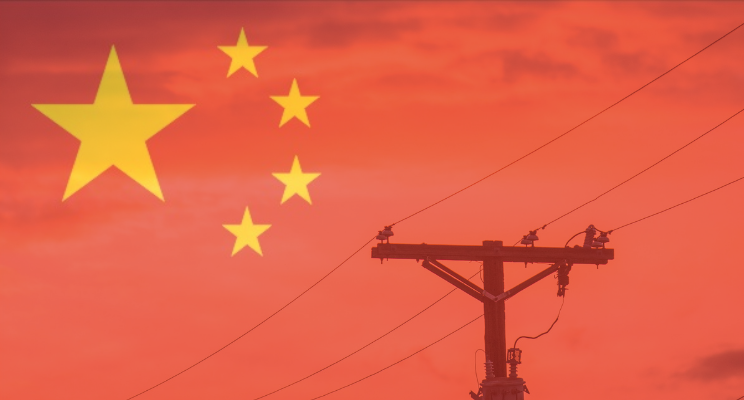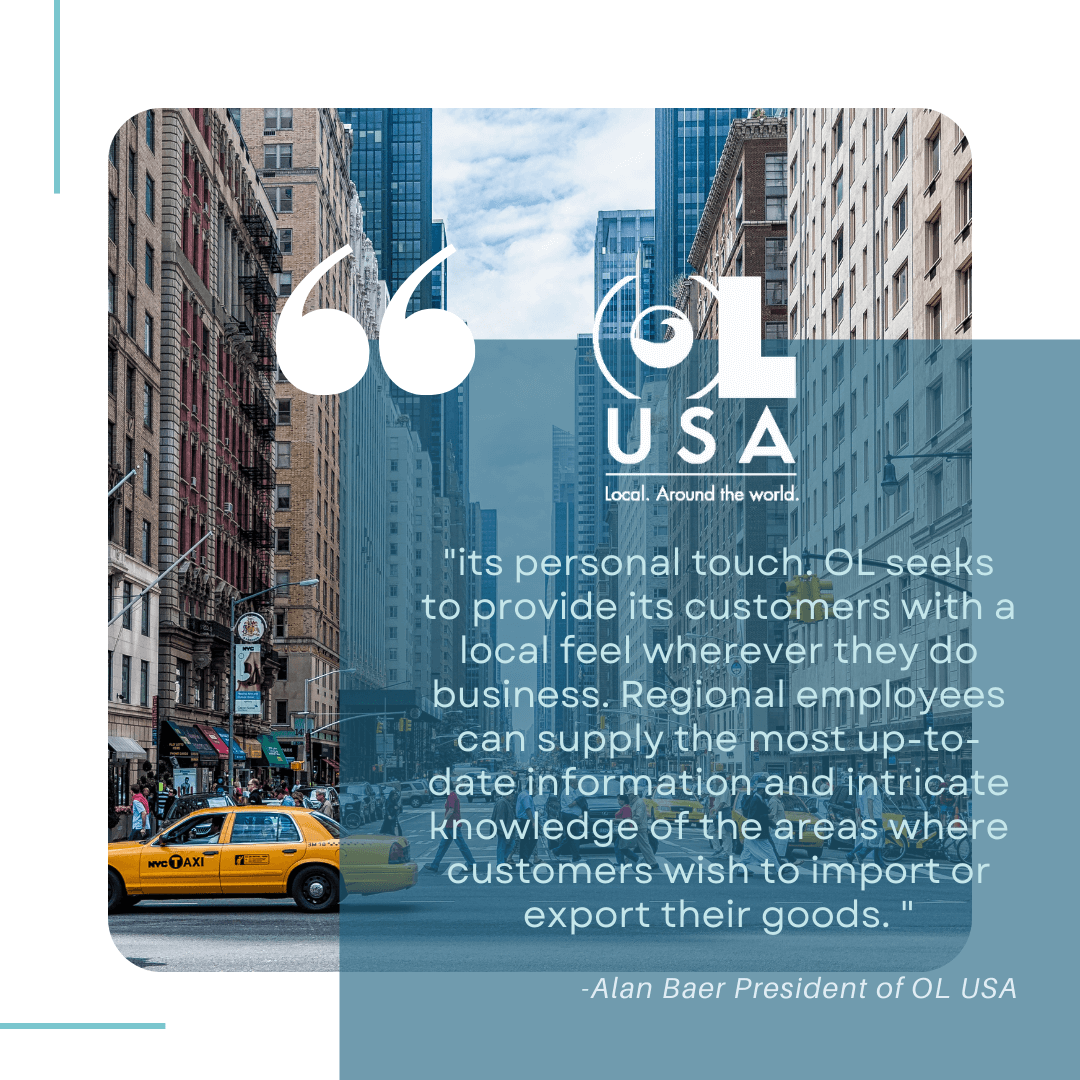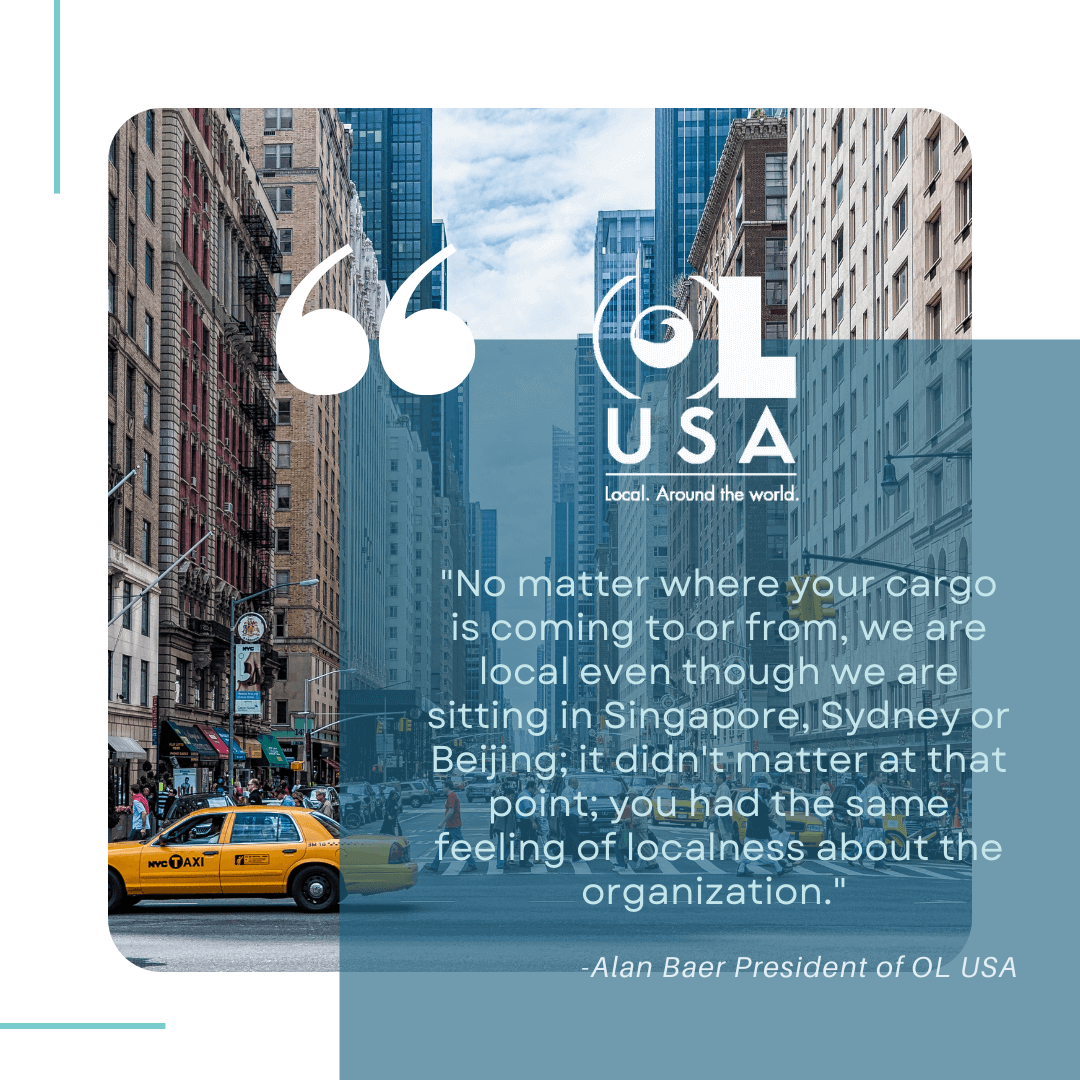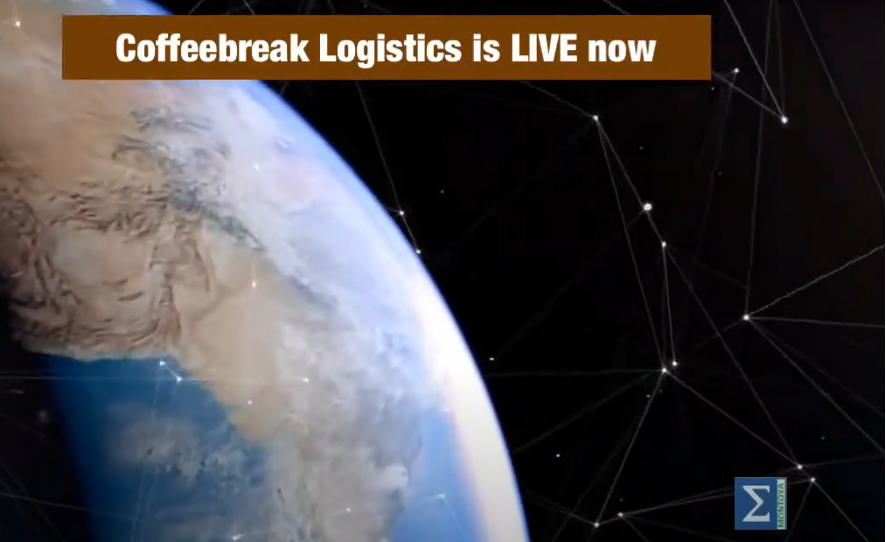Last week, OL President, Alan Baer, spoke on everything from the future of the supply chain to what makes OL “local around the world” when he appeared on Coffeebreak Logistics – No Booking.
Although the conversation featured glimpses into Baer’s past, it focused mainly on the current issues in the industry and how OL is navigating these rough seas. Here are four key takeaways from the discussion:
1.) Port Congestion to Extend Through
The holidays will contribute to further delays due to vacations and business closures. Baer believes congestion and backlogs will continue well into 2022 and possibly into 2023.
Early in the conversation, Baer and Montoya dove into a pressing question for businesses and consumers worldwide: what exactly will be available this holiday season?
Baer stated that cargo on the 80+ ships waiting outside the port of Los Angeles and Long Beach is unlikely to arrive in stores for Black Friday.
“We’ve had some ships that arrived around the 15th of October, and they are just berthing this week [11/15] onto the dock,” he said.
He elaborated that OL partners in China estimated that shipping capacity is operating at about 70% due to congestion, yet cargo volume is up around 30%.

Power Rationing is now underway in China,
with production capabilities down by 40%! Factories in at least ten Chinese provinces… To Learn more about US/China supply chain relations read more at our resource page here.
2.) Trucker Shortage to Continue Through 2022
Limited capacity also extends to labor, where a truck driver shortage of over 80,000 drivers grips the United States. Montoya and Baer examined trucking’s current predicaments and the industry’s future.
Driver behavior changed since the onset of the pandemic, with many choosing routes closer to their homes and families. The trucking industry has an increasingly aging workforce and faces difficulty attracting younger drivers. But the need for trucking in the supply chain cannot be understated.
“That last mile is in a truck,” Baer said. “When you come right down to it, you can go to any store, and in the end, those goods showed up in a truck.”
Baer predicts that will become prominent in the long term. Immediately, however, trucking shortages are an obstacle that global logistics companies must face and address sooner rather than later.
![What about coming up with adding more funds to pay drivers, afford clean trucks & fees, or a comprehensive plan to match up import empty returns to exports so we can avoid the ports? –Carrie Murphy [CCO – OL USA] What about coming up with adding more funds to pay drivers, afford clean trucks & fees, or a comprehensive plan to match up import empty returns to exports so we can avoid the ports? –Carrie Murphy [CCO – OL USA]](https://www.ol-usa.com/wp-content/uploads/2021/11/OLUSA_social_quote_banner.png)
Join Us on social media
3.) US Infrastructure Problem: Investment Needed to Address Increasing Consumer Demand
4.) Better Customer Service Requires a Personal Touch
When asked about OL’s tagline, “Local Around the World,” Baer highlighted what makes OL special: its personal touch. OL seeks to provide its customers with a local feel wherever they do business. Regional employees can supply the most up-to-date information and intricate knowledge of the areas where customers wish to import or export their goods.

OL USA is dedicated to growing its networks to preserve and expand its local expertise. As a company we move over 100,000 teus annually, our staff speaks over 17 different languages, and we have a network of over 140 agents covering 140+ countries. OL USA offers our clients a single-source experience from beginning to end, which is reflected in our 99% customer retention rate. Local, around the world has allowed OL the wherewithal during uncertain times to invest further as an organization and add 65 new hires so far in 2021.
“Clearly, as you travel around, there’s a difference; there are just different takes on how people speak to each other, how they interact,” Baer said. “No matter where your cargo is coming to or from, we are local even though we are sitting in Singapore, Sydney or Beijing; it didn’t matter at that point; you had the same feeling of localness about the organization.”

But at its core, it’s the company’s staff that provides that personal touch and extraordinary customer service. Baer emphasized his employee’s speed of response when corresponding with customers, their dedication to going the extra mile (even absorbing costs when something goes awry), and their ability to grow the company’s client base as the competition loses customers.
Check out the full interview here and for more information on OL’s expansive services, visit https://www.ol-usa.com/services/
About OL
OL USA has become one of the fastest-growing bonded NVOCCs in the world and has service contracts with the highest-rated ocean carriers. Through our integrated network of agents across the globe, we have a presence in all major trade and business centers. Working with importers, exporters, and freight forwarders, we can move their goods quickly and efficiently and provide a breadth of door-to-door services worldwide.
OL USA offers our clients a single-source experience from beginning to end, along with the technology to handle today’s globalized market. OL USA is Local, Around the World.
About Coffeebreaks
Coffeebreak Logistics – No Booking airs on LinkedIn and examines the state of global logistics and some of the most pressing issues in the supply chain. The show features Logistics & Supply Chain leaders across the globe who bring their views on today’s hot topics and share their stories, strategies, and advice on how to successfully navigate these tumultuous times.



